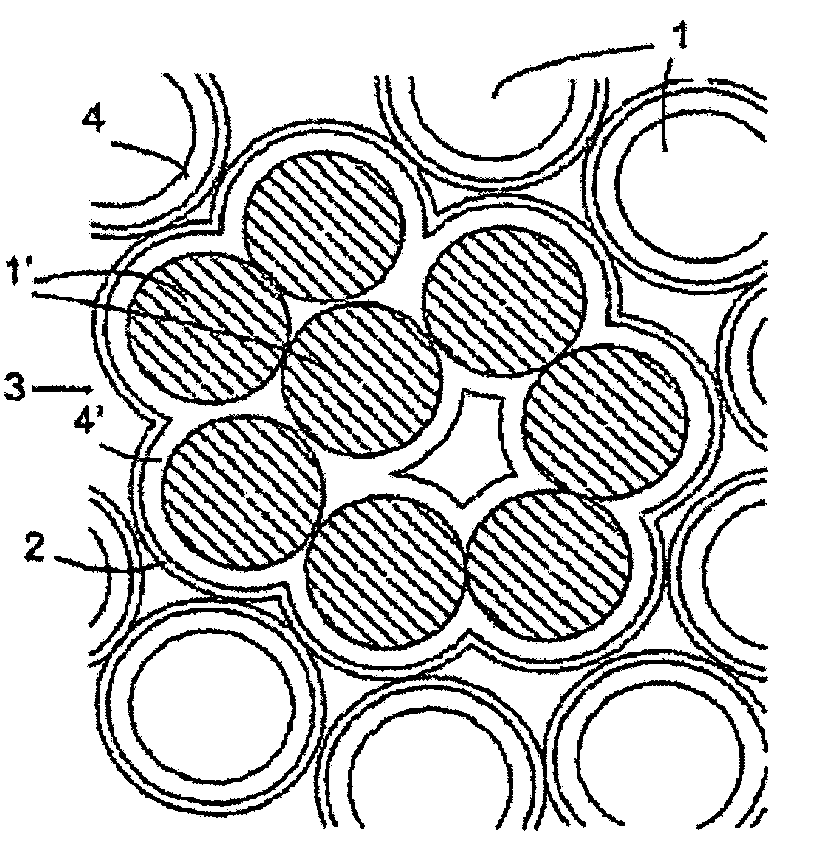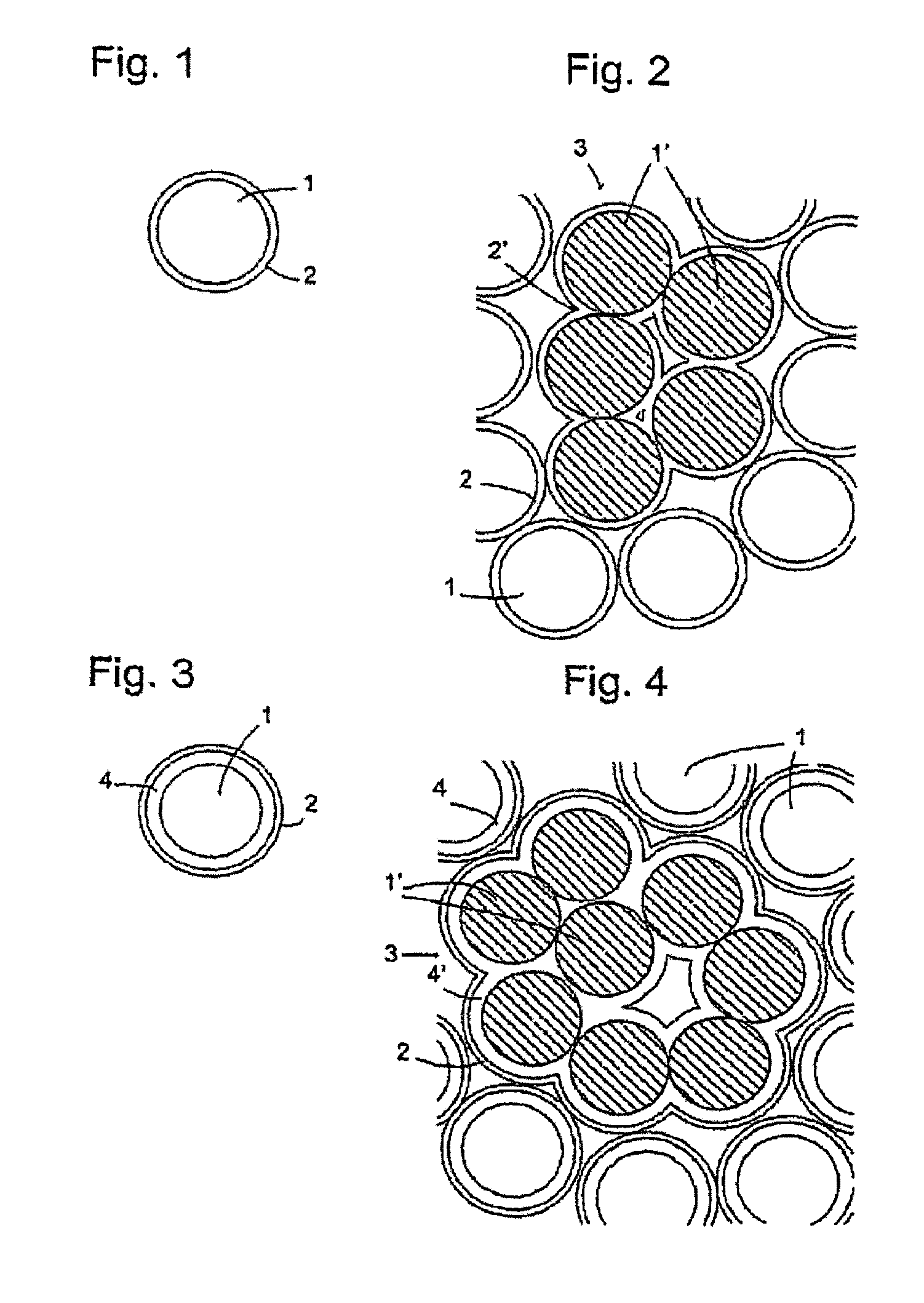Polyvinyl butyral granular material for 3-D binder printing, production method and uses therefor
a technology of polyvinyl butyral and granular material, which is applied in the direction of granulation with special binding agents, cellulosic plastic layered products, additive manufacturing processes, etc., can solve the problems of crack formation in an object produced using a process of this type which exceeds a certain maximum size, and the finished object is subject to significant shrinkage, etc., to achieve the effect of increasing the service life of the nozzle used to apply the binder liquid to th
- Summary
- Abstract
- Description
- Claims
- Application Information
AI Technical Summary
Benefits of technology
Problems solved by technology
Method used
Image
Examples
first embodiment
[0033]FIG. 1 shows a particle of granulated material in accordance with the invention, in the form of a diagrammatic section. The particle is in the form of a sphere, but it will be understood that it may also take a form which deviates from the shape of a sphere, for example ellipsoidal or irregular form. The particle has a core 1, for example made from metal, ceramic or an alcohol-resistant polymer material, such as polymethyl methacrylate (PMMA), which is surrounded by a surface layer 2. A preferred material for the surface layer is a polyvinyl butyral, since this material forms a highly hydrophobic, nonpolar outer surface. Suitable polyvinyl butyrals are marketed under the name pioloform by Wacker Polymer Systems; pioloform BN18 is preferred.
[0034]The surface layer is produced by dissolving the pioloform in an alcohol, such as ethanol, isopropanol, n-butanol, etc., or an alcohol mixture, applying the solution to the particles of the granulated material and drying the particles. ...
second embodiment
[0042]FIG. 3 shows a diagrammatic section through a particle of a granulated material according to the invention in accordance with the invention. The particle once again has a core 1 of ceramic, metal or polymer material and a surface layer 2. The surface layer 2, unlike in the case of the particle shown in FIG. 1, does not consist of a polymer material, but rather is a monolayer of a surfactant. This surfactant may be any surfactant which is known from the field of detergents, cleansing agents or body-care agents, such as for example sodium lauryl sulphate, a betaine or the like.
[0043]Between the surface layer 2 and the core 1 there is an intermediate layer 4 of a polymer material. As in the first exemplary embodiment, this polymer material may be a polyvinyl butyral, such as pioloform, but it is also possible to use other classes of polymers, such as for example polyvinyl pyrrolidones, in particular the materials marketed by BASF under the tradenames Luviskol and Luvitec, as well...
PUM
| Property | Measurement | Unit |
|---|---|---|
| thickness | aaaaa | aaaaa |
| thickness | aaaaa | aaaaa |
| thickness | aaaaa | aaaaa |
Abstract
Description
Claims
Application Information
 Login to View More
Login to View More - R&D
- Intellectual Property
- Life Sciences
- Materials
- Tech Scout
- Unparalleled Data Quality
- Higher Quality Content
- 60% Fewer Hallucinations
Browse by: Latest US Patents, China's latest patents, Technical Efficacy Thesaurus, Application Domain, Technology Topic, Popular Technical Reports.
© 2025 PatSnap. All rights reserved.Legal|Privacy policy|Modern Slavery Act Transparency Statement|Sitemap|About US| Contact US: help@patsnap.com


